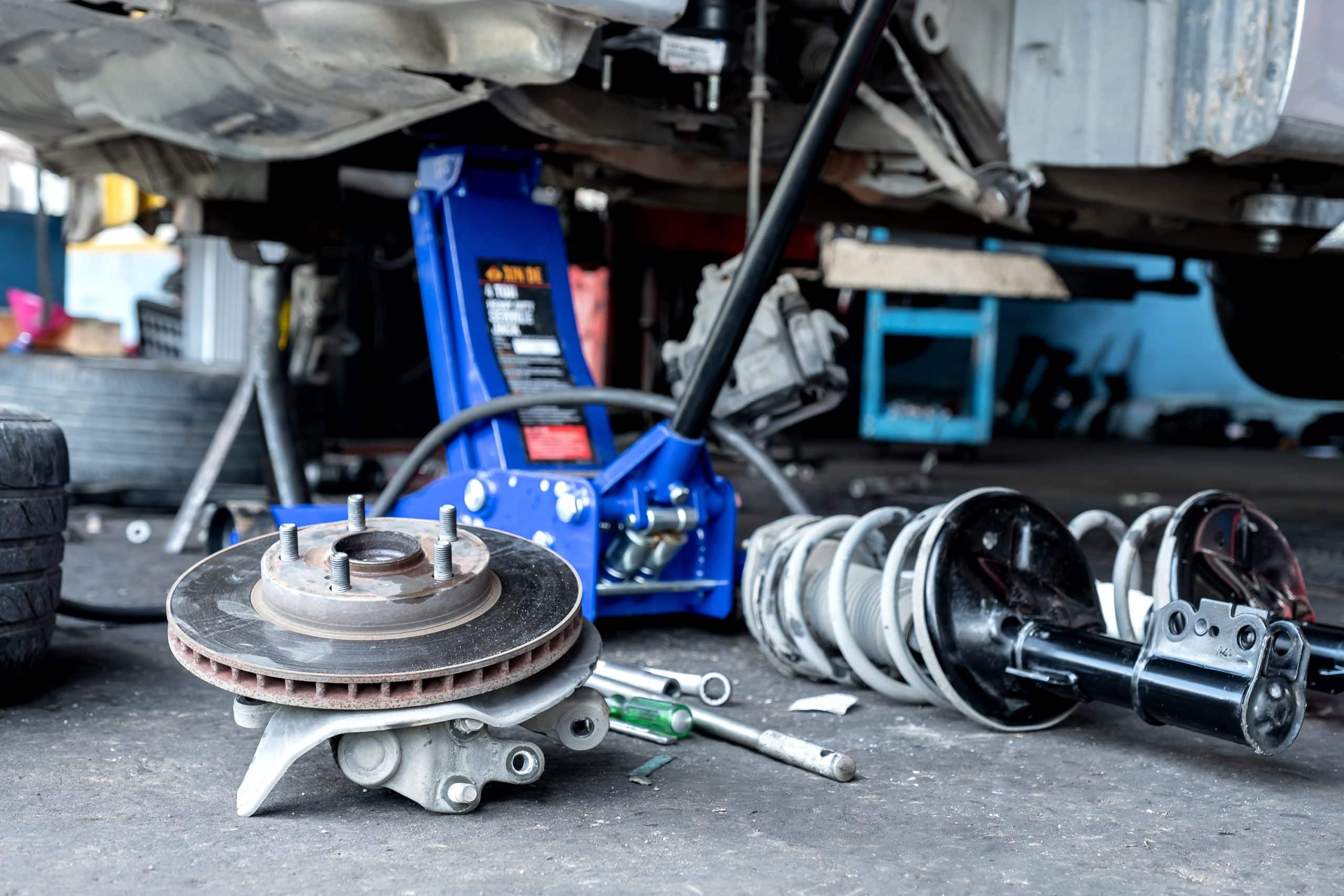Can You Retrofit Active Suspension on a First-Generation Audi R8?

Dear car enthusiasts, how often have you pondered adding a bit more power, performance, or precision to your beloved ride? If you are an owner of a first-generation Audi R8, you may have wondered if it’s possible to retrofit an active suspension system. In this article, we will delve into this topic comprehensively.
Understanding the Audi R8’s Performance
In order to understand if retrofitting is feasible, it’s crucial to first understand the already impressive performance characteristics of the Audi R8. This car, produced by one of the world’s most admired car manufacturers, Audi, is not just any vehicle – it’s a sporty marvel.
En parallèle : How to Adjust the Fuel Pressure Regulator for Performance Gains in a VW Beetle Turbo?
Launched with a mid-mounted 4.2-liter V8 engine, which was joined later by a more potent 5.2-liter V10, the R8 has always been a car of superior performance. Their engines are mated with either a six-speed manual transmission or a seven-speed S-Tronic dual-clutch transmission, sending power to all four wheels through Audi’s famed Quattro all-wheel-drive system. The weight balance is almost even front to rear, which combined with Quattro, provides excellent stability and control.
This sophisticated machine boasts a highly reactive handling system and an ability to deliver torque effectively to the wheels that need it the most. These aspects make the R8 a thrill to drive, but can they be improved with an active suspension retrofit?
A lire également : Can You Increase Efficiency in a Toyota Prius with Aerodynamic Wheel Covers?
Audi’s Quattro All-Wheel Drive: The Cornerstone of Performance
Audi’s Quattro system is no ordinary all-wheel-drive system. It is a fully variable system that can distribute power and torque between the front and rear wheels in a way that best suits the current driving conditions. The primary philosophy behind Quattro is about maximizing grip and maintaining the best possible stability and control, even under the harshest conditions.
The active sport differential in the R8 can shift power between the rear wheels, enhancing cornering performance. This is one feature of the Quattro system that plays a substantial role in the car’s handling and performance. It’s also a component that could be affected by a retrofit of the suspension system.
What is an Active Suspension System?
An active suspension is a type of automotive suspension that controls the vertical movement of the wheels relative to the chassis or vehicle body with an onboard system. This system uses sensors and actuators to react and adapt to varying road conditions, enhancing ride quality, handling, and performance.
Active suspension systems work to minimize body roll and pitch during cornering, accelerating, and braking. They provide superior ride comfort and handling compared to traditional suspension systems by continuously adjusting the shock absorber firmness to reduce body movement.
This system can increase the car’s performance by improving grip, reducing wheel load fluctuation, and making better use of the tire performance. However, the question remains, is retrofitting an active suspension system to a first-generation Audi R8 a viable option?
Retrofitting Active Suspension: Is It Possible?
Retrofitting active suspension on a first-generation Audi R8 is technically possible, but it’s not a task to be taken lightly. The car was not initially built with this technology in mind, which implies that you’ll need to make some significant modifications.
Firstly, the active suspension system will need to interact with the car’s existing electronics and control systems, including the Quattro all-wheel-drive system and the car’s stability control systems. This might require a complete rewiring of the car’s electronics, which is no small undertaking.
Secondly, the active suspension system’s actuators and sensors will need to be fitted onto the car’s existing chassis and wheel hubs. This may require additional structural modifications, especially if the car’s original suspension components are of a different size or shape compared to the new components.
Lastly, the new suspension system will need to be tuned and calibrated to work effectively with the car’s other systems. This will no doubt require a specialist with experience in vehicle dynamics and control systems, and it may take a considerable amount of time to get right.
Performance and Cost Considerations
While retrofitting an active suspension system on a first-generation Audi R8 has the potential to improve the car’s performance, it’s crucial to weigh the benefits against the cost and effort required.
Installing such a system could significantly improve handling and ride comfort, enhancing the car’s performance. However, this is a complex, time-consuming, and potentially costly process. The retrofitting process itself can cost thousands of dollars, and that’s before taking into account potential costs from complications or unforeseen issues.
Moreover, the increased complexity of an active suspension system can lead to higher maintenance and repair costs in the future. Therefore, while the performance gains may be tempting, you must carefully consider whether the potential benefits justify the considerable investment required.
In the world of automotive modifications, there is often no definitive ‘yes’ or ‘no’ reply to questions like these. The decision ultimately comes down to your personal preferences, budget, and how much you value the potential performance benefits. It’s always recommended to quote professionals and seek their advice before making a final decision.
Retrofitting Challenges and Potential Solutions
Given the complex task that retrofitting an active suspension system poses, it’s essential to understand the challenges and potential solutions. Essentially, any modification to a car of the caliber of the first-generation Audi R8 necessitates a nuanced understanding of the vehicle’s engineering.
The R8 is not just any sports car, but a feat of engineering equipped with Audi’s Quattro all-wheel drive system, originally posted as a technology to maximize grip and control. Thus, integrating new components into this sophisticated system is no small feat. The retrofitting process may involve replacing parts like the steering wheel and other components to accommodate the new technology.
One major challenge would be embedding the active suspension’s sensors into the car’s chassis. The sensors are crucial to an active suspension system as they detect changes in the road surface and adjust the suspension accordingly. Since the Audi R8 was not originally designed to have these sensors, installing them could necessitate significant structural modifications.
As for potential solutions, use of carbon fiber materials can provide extra strength and flexibility needed to accommodate the active suspension system. Carbon fiber is a lightweight, strong material that’s often used in race cars and high-performance vehicles, making it a potential ally in this retrofitting process.
Additionally, consulting with professionals who are well-versed in vehicle dynamics and control systems would be invaluable. They can provide insights and advice to ensure the retrofitting process goes as smoothly as possible, minimizing potential issues down the line.
Conclusion: Retrofitting Active Suspension on a First-Generation Audi R8
In conclusion, retrofitting an active suspension system on a first-generation Audi R8 is technically possible, but it may not be practical for everyone. The complexity of the task, the potential costs involved, and the possible need for significant modifications to the car’s structure are all factors that should be taken into account.
Despite these challenges, the potential benefits of an active suspension system – increased grip, reduced body roll, enhanced cornering performance – cannot be overlooked. For those with a deep passion for automotive performance and the financial resources to undertake such a project, retrofitting an active suspension system could transform their Audi R8 into an even more formidable sports car.
However, the decision to retrofit shouldn’t be made lightly. Before proceeding, be sure to quote professionals and carefully consider all aspects, including your budget, the potential performance benefits, and the time and effort required.
Ultimately, the decision to retrofit an active suspension system on a first-generation Audi R8 should be made based on a thorough evaluation of the costs and benefits. Remember, the joy of owning a car like this doesn’t solely lie in its performance, but also in the driving experience, the vehicle’s aesthetics, and the pride of owning a marvel of automotive engineering.
